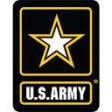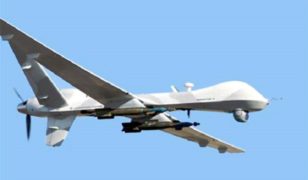Army S&T invites industry to Asymmetric Vision/Decide Faster initiative Industry Day
 On August 10, the U.S. Army posted an invitation to an Industry Day for the Asymmetric Vision/Decide Faster initiative (Solicitation Number: W909MY-17-R-P999). The Industry Day will take place on December 13 and 14. Requests to attend are due by 5:00 p.m. ET on October 27.
On August 10, the U.S. Army posted an invitation to an Industry Day for the Asymmetric Vision/Decide Faster initiative (Solicitation Number: W909MY-17-R-P999). The Industry Day will take place on December 13 and 14. Requests to attend are due by 5:00 p.m. ET on October 27.
The Army Contracting Command-Aberdeen Proving Ground Belvoir Division is announcing an Industry Day on behalf of the Army Research, Development and Engineering Command (RDECOM), Communications and Electronics Research, Development and Engineering Center (CERDEC), Night Vision and Electronic Sensors Directorate (NVESD), and the Army Science and Technology (S&T) community for the Asymmetric Vision/Decide Faster (AV/DF) initiative.
The Industry Day will be held at Fort Belvoir, VA on 13 and 14 December 2017. The purpose of the meeting is for Army S&T to provide some initial information on the Asymmetric Vision/Decide Faster initiative. The Army seeks to identify current and emerging technologies and/or projections of technology-enabled concepts that could provide significant military advantage to the United States (U.S.) Army during operations in complex, contested/congested environments between now and 2028. The desire and capacity to achieve overmatch objectives are already present and ongoing at various levels across the entire Army S&T enterprise as well as across industry. Optimizing these existing investments through increased participation of technologies in experimentation and demonstration events will enable the necessary capabilities needed to support future conflicts.
As part of ongoing Army initiatives to deliver technologies which provide our Soldiers with offsets, this Industry Day will shed light on new technologies and approaches to warfighting. The goal of this initiative is to include developments achieved within the private sector, including those firms and academic institutions outside that do not traditionally do work with the U.S. Army. This focus will be in the following technology areas:
-
3D Enriched Urban Terrain – Develop and deploy a suite of tools and workflows to rapidly and cost-effectively collect and process accurate, measurable, updatable interactive displays of maps/models of geometry, materials and functions of vertical and horizontal infrastructure. 2. Advanced Training and Simulation Tech – New training technology and environments to train and rehearse decide faster warfighting skills with integrated capabilities such as intelligent agents which challenge the Warfighter to improve Soldier/team performance and to develop agile and adaptive leaders. 3. Assured PNT and Communication – A robust scalable network architecture that is MIJI resistant and enables secured transmission and communication with Dynamic Spectrum Access, Smart Networking Radios, LTE, and Channel Allocation. 4. Augmented Reality Situational Awareness and Targeting – Heads up visualization system that augments Warfighter’s vision with 3D information, updates the dynamic environment and cues application of effects for training, rehearsal and operational maneuver and fires. 5. Counter Tactical Surveillance and Targeting – Multi-spectral multi-modal capability that provides 360° coverage to detect, locate, and counter conventional and asymmetric threat activity, including reliable detection and tracking of UxSs in high cluttered environments as well as cueing obscurant and obscurant mitigation. 6. Expeditionary Processing, Exploitation and Dissemination – Effective Multi-INT Extensible PED capability spanning air, ground and Soldier platforms. 7. Integrated Sensor Architecture – A sensor network that can adapt and task sensor for the greatest effect spatially, spectrally, and temporally; utilities for any sensor to be dynamically discovered and utilized for a “common view”; ISA is a game-changing architecture to link all battlefield sensors with minimal investment. 8. Integrated Visual Ensemble – A Head Mounted Display System that provides enhanced Situational Understanding capability to the Warfighter by integrating targeting imagery, geolocation information, situational awareness and mission command information without increasing Soldier cognitive burden 9. Mission Planning Technologies for Small Units – Tools that enable synergistic and optimized mission planning at the company and below level during one or more phases of the operation. 10. Multi-Spectral Persistent ISR/ Unmanned Formations – An integrated architecture consisting of air, ground and Warfighter-borne sensors. Includes payloads enabling nighttime wide area surveillance, advanced algorithms to detect and track tactically significant behaviors and materials of interest and high fidelity sensors to enable high inspection and identification of objects. 11. Small Unit Leader Precision Targeting – Soldier enhancing sensor technologies capabilities via a suite of novel, integrated C4ISR technologies. 12. Soldier-Optimized Performance – Individualized regimens including nutrition, neutraceuticals, pharmaceuticals, and synthetic biology to prevent disease, speed recovery, and augment human performance to enable physical, social, and cognitive overmatch in the dynamic OE. 13. Urban Sensing for Dismounted and Mounted Operations – Situational Awareness for Soldiers while both mounted and dismounted for battlespace awareness throughout operations with capabilities to handoff targets day-night between mounted and dismounted platforms. Includes the Integrated Soldier Ensemble, Threat Detection and Counter Sensor, and DVE Mitigation 14. Wearable Devices – Emerging wearable technologies provide an unprecedented ability to collect continuous, high-resolution data over significantly longer time periods. Sensor data combined with advanced modelling techniques and machine learning will permit cognitive performance enhancement and may act in a way that an instructor teammate could not.
Full information is available here.
Source: FedBizOpps








